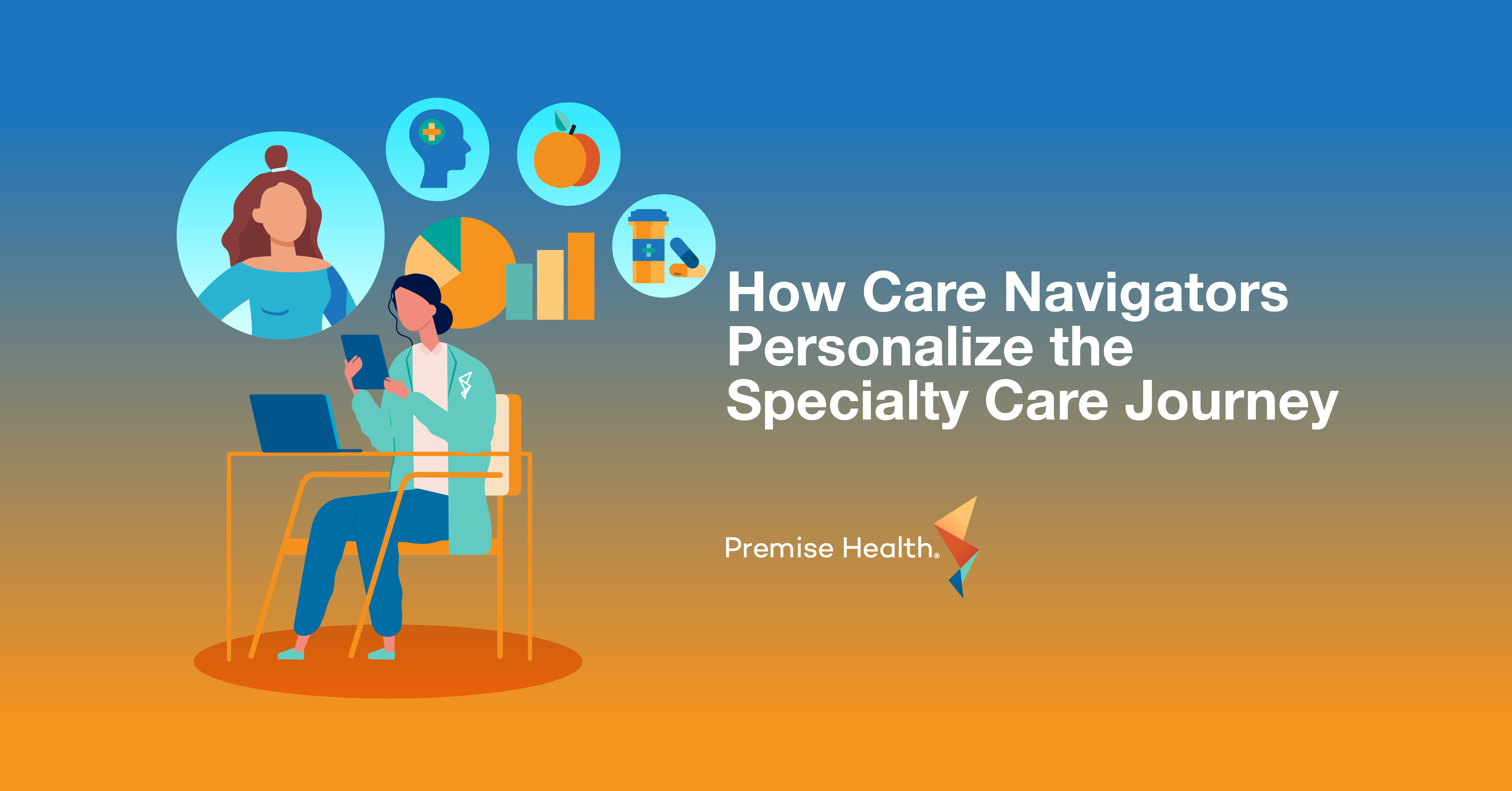Value-Driven Care: The Right Side of Healthcare for Commercial Populations
The unfortunate reality is that our healthcare system doesn’t serve organizations or their people well.
Every day, employers struggle to control wasteful healthcare spending and employees struggle to navigate a system they don’t understand. Economic inflation means employers are expecting a 5.6% increase in benefit cost per employee in 2023, and potentially more in coming years. Meanwhile, patients often find themselves navigating a fragmented system of ineffective treatments, potential misdiagnoses, and difficult-to-find specialized care for complex conditions. All care isn’t equal, and the average person may not know where to turn for the best solutions to their health.
In response, employers turn to a concept called population health to solve for increasing costs. Population health strategy uses a combination of solutions that can be offered to both workers and dependents to address medical issues that are causing the majority of healthcare spending. These solutions – often centered around a health plan in an organizational setting – aim to make it easy to reduce cost and improve outcomes for members. Unfortunately, not every approach to population health is high quality, leaving employers wondering what they can do to fix a broken system.
Healthcare’s biggest problems affect everyone
To understand the challenge that employers face in building an effective population health strategy, it’s important to recognize the most ineffective parts of the healthcare system. For both patients and the employers who pay for healthcare treatment, there are four primary challenges:
It’s expensive
If you’ve ever compared medical treatment options, you might have noticed a significant difference in price when getting the same care at different facilities; even for in-network care in the same market, costs can vary more than 800% on average, with no correlation to quality. That difference in cost is driven by the facility, not the provider.
For stressed patients choosing providers with the goal of feeling better as soon as possible, the financial burden of medical care can be devastating: 66.5% of bankruptcies in the U.S. are attributed to medical expenses or medical problems that caused loss of work.
It lacks transparency
Not every facility, hospital, or specialist is good at everything, and quality varies depending on who and where you get care from in the community. For example, a hospital that ranks No. 1 amongst national facilities for neurosurgery could rank lowest for gastrointestinal procedures.
With information on quality not publicly available and most referrals based on provider relationships, the average person has nowhere to turn to find affordable, high-quality care for their specific condition. As a result, healthcare price transparency company Healthcare Bluebook reports that consumers go to the wrong facility or provider more than 80 percent of the time, putting them at greater risk of more serious financial and health issues if they choose the wrong place to get care.
It focuses on sick care
Traditional population health typically focuses more on treating specific chronic conditions or one-time high-cost episodes of care instead of prioritizing the long-term health challenges that will cause perennially high costs.
That puts the focus on employees who have one-time incidents like a major surgery or car accident that requires high-cost procedures, but not people who have chronic comorbidities like diabetes or dyslipidemia that might be the root cause of repeated emergency room visits. These patients may be getting treatment that numbs their symptoms instead of treating their underlying conditions, once again putting them at risk of developing further health issues and wasting more money in search of temporary relief.
It’s wasteful
Even if a patient finds a provider and schedules an appointment for their symptoms, the hurdles to receiving proper care don’t end in the exam room. Lack of provider collaboration in community-based settings results in approximately 12 million adults in the United States receiving incorrect diagnoses each year, with half of these patients potentially experiencing harm from their misdiagnosis.
Not only do these errors negatively impact patients, but employers also waste up to $715B in healthcare spend each year on duplicative procedures and other unnecessary care.
The best primary care should include these solutions
While these challenges may paint a bleak picture for healthcare, the situation isn’t hopeless. Employers can prevent costly and inappropriate care by understanding where their healthcare costs are concentrated and working with a partner that can connect primary and specialty care with a concierge experience. When organizations embrace value-based care models, employees get more effective care that helps feel better, faster. But what does a comprehensive plan look like?
Take a data-driven approach
To best serve people’s needs, a value-based care partner should use data to identify the high-cost, high-risk members and what they need. By examining information like medical and pharmaceutical claims data, chronic conditions, care gaps, and unnecessary specialist spending, they can identify the top 30% of the population that typically accounts for 95% of a company’s healthcare spending and strategically focus efforts on these members to deliver the most impact. Putting focus on these high-risk members doesn’t just reduce their need for specialist care and costly procedures, but also reduces the cost their employers spend on care annually, too.
Provide expert guidance
Without help, making the lifestyle changes necessary to improve overall health can seem like an insurmountable task for people juggling chronic conditions and busy lives. An impactful population health strategy can help by giving members access to personalized guidance on how to get healthy from a care manager.
Care managers proactively reach out to high-risk members to offer coaching and accountability on diet, exercise, sleep, stress, and other common pillars of total wellness. With the support they need to pursue a healthier lifestyle, members can reduce their expensive visits to specialists and emergency departments and lead higher quality lives.
Offer concierge support
By providing tools that offer price transparency, hands-on support, referrals to high-value specialist care, and assurance for people as they search for in-network, accessible care, employers can ensure that their people don’t end up paying more for substandard or unnecessary care. In turn, this produces better health outcomes for workers and their families and stops wasting money on inappropriate care for employers who are footing the bill.
Make difficult times easy
Patients often experience a “wandering diagnosis” when they are unable to get a definitive diagnosis or treatment from several providers. This often happens when individuals have an array of health issues that may be complicated, rare, persistent, substantially disabling, or life-threatening. This process is costly, time-intensive, and – perhaps above all – frustrating for the patient and their family.
When a value-driven care partner can make referrals to best-in-class facilities and providers that are more familiar with complex health conditions, the additional support can save patients up to nine years on average to get correct diagnoses and treatment plans that actually work.
Connect the experience
Working with a single, connected provider for high-quality primary care will optimize the experience for both patients and employers.
For patients, having one trusted care team and one place to access appointments and medical records reduces taxing back-and-forth when managing their care. It also increases their sense of security for more open, personalized appointments with the doctors. Meanwhile, employers benefit from being able to see the “big picture” of their population’s health. Through data, they can solve problems without the cost or time investment of having to manage a dozen separate vendors.
An all-in-one population health solution
At Premise Health, we know the importance of getting proper care for your population the first time. Our Connected Care+ product suite leverages population data to identify members who need care the most, guides them through the process of making lifestyle changes to decrease their overall health risk, and facilitates consultations and referrals to world-class facilities and specialists. And best of all, our four-pillar approach – including Care Management, Care Navigation, Care Excellence, and Care Consult – operates as a comprehensive ecosystem, making it easier than ever to make sure your people get the care they need. Ready to create a better future? Contact us today.
Next on industry insights.

One Less Errand, One Healthier Member: The Power of 90-Day Prescriptions
Read the Blog
How Care Navigators Personalize the Specialty Care Journey
Read the Blog